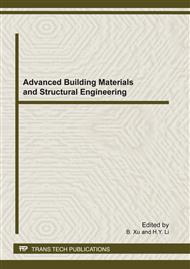p.429
p.435
p.440
p.444
p.448
p.453
p.457
p.461
p.466
Multirate-Based Fast Parallel Algorithm for 2-D DCT-Based Real-Valued Discrete Gabor Transform
Abstract:
Novel and fast algorithm for the multirate and parallel implementation of the 2-D DCT-based real-valued discrete Gabor transform (RDGT) is presented. A 2-D multirate-based analysis filterbank is designed for the 2-D RDGT. Each of the parallel channels in the filterbank has a unified structure and can apply the 2-D fast discrete cosine transform (DCT) algorithm to reduce its computational load. The computational complexity of each parallel channel is very low and is independent of the oversampling rate. All the RDGT coefficients are computed in parallel during the analysis process. Thus, the proposed parallel algorithm is attractive for real time image processing.
Info:
Periodical:
Pages:
448-452
Citation:
Online since:
February 2012
Authors:
Price:
Сopyright:
© 2012 Trans Tech Publications Ltd. All Rights Reserved
Share:
Citation:


